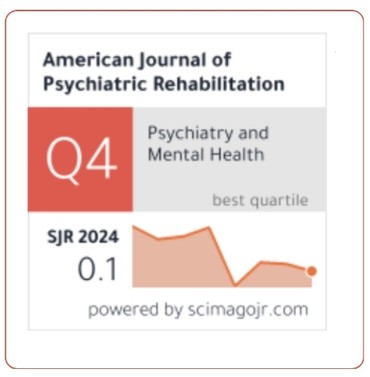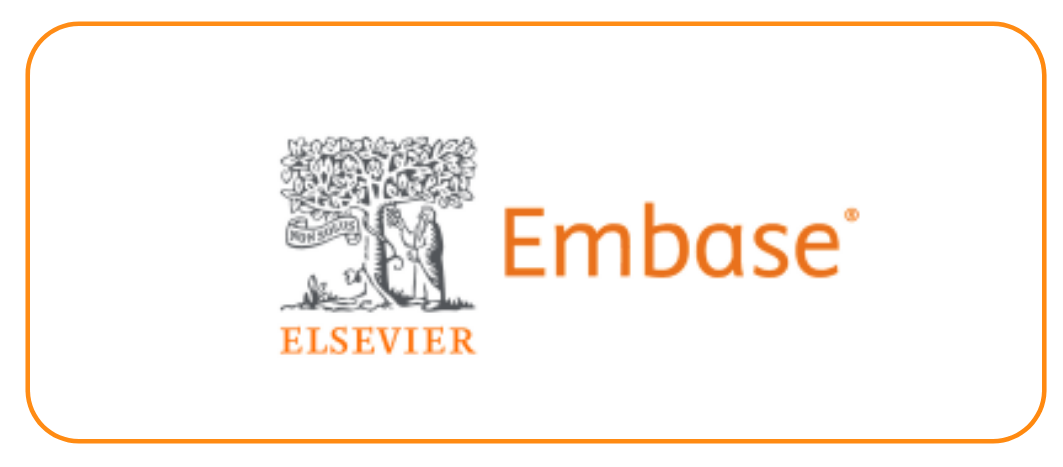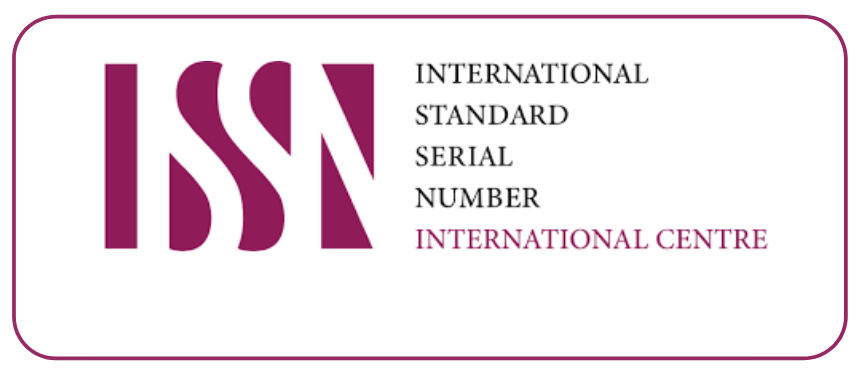A Study on Paradigm shifts of Tourism Industry in India
DOI:
https://doi.org/10.69980/ajpr.v28i5.371Keywords:
Indian tourism, Foreign tourist arrivals, Tourism policy, Foreign exchange earnings, Sustainable travel, Digital innovation, COVID-19 recoveryAbstract
Background: The Indian tourism industry has undergone significant transformation between 1990 and 2023, shaped by economic liberalization, global outreach, policy reforms, and digital innovations. This period witnessed a transition from a relatively closed, heritage-centric model to a diversified, technology-integrated tourism economy.
Methods: This study adopts a comprehensive review methodology, relying on secondary data from credible national sources such as the Ministry of Tourism and the Reserve Bank of India, and international organizations including the UNWTO, WTTC, and the World Bank. Analytical tools such as trend analysis, CAGR computation, and policy content review were employed to assess the evolution of Foreign Tourist Arrivals (FTA), Foreign Exchange Earnings (FEE), and the impact of government interventions.
Results: The findings highlight three key developmental phases, including 1990-2000 (post-liberalization restructuring), 2001-2010 (global marketing and branding through campaigns like Incredible India), and 2011-2023 (digital transformation and post-COVID resilience). FTA and FEE have grown substantially over these years, with minor setbacks during global crises. Government initiatives, visa reforms, and public-private partnerships have positively influenced growth. Simultaneously, the sector faces challenges including infrastructure limitations, sustainability issues, and seasonal dependence.
Conclusion: India's tourism sector holds immense potential. With continued focus on smart tourism, niche offerings, and inclusive policies, the industry is poised for sustained and resilient expansion in the coming years.
References
1. Agarwal, N. (2016). India's Liberalized (Yet Restrictive) Trade Policy. ORF Issue Brief, Issue, (152).
2. Akoijam, S. L., Bandaru, T. R., & Sangma, G. A. (2024). Reviving and Recovering Domestic Tourism in India Postcovid-19 Pandemic: Challenges, Prospects, and Strategies. In Post-COVID Tourism and Hospitality Dynamics (pp. 277-289). Apple Academic Press.
3. Aniko, K. (2016). The meaning and importance of Thomas Kuhn’s concept of ‘paradigm shift’. How does it apply in Education?. Opus et Educatio, 3(2).
4. Anyasor, M. O., Rejoice Okocha, E., Agina, E. K., & Nwankwo, U. C. (2021). Effectiveness of Visa Facilitation and International Openness as Strategies for Tourism Development: A Comparative Study of Nigeria and Selected African Countries. Journal of Hospitality and Tourism Research, 9(2), 28-45.
5. Babu, K. V., & Barik, B. (2024). Revitalizing a Traditional Heritage Hotel for Modern Tourism in Asia Pacific Using Influencer Marketing. In Teaching Case Studies for Tourism and Hospitality in Asia and The Pacific: With Cartoon Illustrations (pp. 129-152). Singapore: Springer Nature Singapore.
6. Barile, S., Ciasullo, M. V., Troisi, O., & Sarno, D. (2017). The role of technology and institutions in tourism service ecosystems: Findings from a case study. The TQM Journal, 29(6), 811-833.
7. Butler, R. (2014). Tourism area life cycle. Contemporary Tourism Reviews, 1, 183-226.
8. Camilleri, M. A. (2019). The use of data-driven technologies in tourism marketing. In Entrepreneurship, Innovation and Inequality (pp. 182-194). Routledge.
9. Chakraborty, P. P. (2024). Tourism in Transition in Sustainable World: Embracing Technology and Sustainability in the Post-Pandemic Era. In Special Interest Trends for Sustainable Tourism (pp. 348-374). IGI Global.
10. Chakraborty, S., & Mitra, D. (2025). Competitiveness and Sustainability of Online Travel Agencies in India: A Case Study on Five Leading Online Travel Agencies in India. In Pioneering Approaches in Data Management (pp. 55-84). IGI Global Scientific Publishing.
11. Chopra, A., & Pandey, A. (2025). I, me, and the outsider–an exploratory study to identify antecedents of sustainable tourism ecosystem in India. Cogent Social Sciences, 11(1), 2493793.
12. Das, N., Gangopadhyay, P., Işık, C., Alvarado, R., & Ahmad, M. (2024). Do volatilities in tourism arrivals and foreign aids matter for GDP volatility in Cambodia? Partial and vector coherence wavelet models. Tourism Economics, 30(6), 1624-1633.
13. Edwards, L., & Ramamurthy, A. (2017). (In) credible India? A critical analysis of India's nation branding. Communication, Culture & Critique, 10(2), 322-343.
14. Fletcher, J., Fyall, A., Gilbert, D., & Wanhill, S. (2017). Tourism: Principles and practice. Pearson UK.
Baken, R., & Bhagavatula, S. (2010). Some reflections on tourism and tourism policy in India. IIM Bangalore Research Paper, (320).
15. Geary, D. (2013). Incredible India in a global age: The cultural politics of image branding in tourism. Tourist Studies, 13(1), 36-61.
16. Gössling, S., Scott, D., & Hall, C. M. (2020). Pandemics, tourism and global change: a rapid assessment of COVID-19. Journal of sustainable tourism, 29(1), 1-20.
17. Goyal, R., & Chauhan, S. N. (2010). Incredible India: An integrated approach for promotion of tourism in India. Mangalmay Journal of Management & Technology, 4(2).
18. Gupta, R. (2015). Tourism, FDI and inclusive growth in India. Pacific business review international, 7(12), 108-114.
19. Gupta, V., Cahyanto, I., Sajnani, M., & Shah, C. (2023). Changing dynamics and travel evading: a case of Indian tourists amidst the COVID 19 pandemic. Journal of Tourism Futures, 9(1), 84-100.
20. Hall, C. M. (2010). Crisis events in tourism: Subjects of crisis in tourism. Current issues in Tourism, 13(5), 401-417.
21. Hall, C. M., & Page, S. J. (2014). The geography of tourism and recreation: Environment, place and space. Routledge.
22. Hall, C. M., & Page, S. J. (2016). Developing tourism in South and Central Asia: introduction. In The Routledge Handbook of Tourism in Asia (pp. 243-260). Routledge.
23. Harrigan, P., Evers, U., Miles, M., & Daly, T. (2017). Customer engagement with tourism social media brands. Tourism management, 59, 597-609.
24. Jamrozy, U. (2007). Marketing of tourism: a paradigm shift toward sustainability. International Journal of Culture, Tourism and Hospitality Research, 1(2), 117-130.
25. Jose, A., & Ram, S. (2019). Influence of'UDAN'Scheme on Network and Regional Connectivity of Indian Airports. Urban India, 39(1), 7-146.
26. Khan, S. (2022). Indian tourism and hospitality, the FTAs, domestic tourism, GDP and tourism promotion. In Indian tourism (pp. 3-19). Emerald Publishing Limited.
27. Khare, A., Dixit, S., & Sarkar, S. (2020). Factors affecting website continuance intention: a study of Indian travel websites. Information Technology & Tourism, 22(2), 243-271.
28. Kumar, S. (2024). Growing Use of Next-Door Faces and Transformation to the Digital Age: A Study on Arrival of New Practices in the Indian Advertising Industry. NOLEGEIN-Journal of Advertising and Brand Management, 7(1), 11-20.
29. Kumar, S. N., Joy, J., Joseph, S. B., & Mathew, A. A. (2024). Role of AR/VR in Popularizing Cultural Heritage. In Digital Cultural Heritage (pp. 1-20). CRC Press.
30. Lal, B. S. (2024). Sustainable Tourism and Economic Growth in India—An Analysis. Journal of World Economy, 3(1), 34-42.
31. Lambrechts, W., & Sinha, S. (2019). Last mile internet access for emerging economies. New York: Springer International Publishing.
32. Lende, P. K., & Ambadkar, S. D. (2024). Factors affecting the consideration of Public-Private Partnerships (PPPs) for smart city projects in Indore city.
33. Li, Z., Wang, D., Abbas, J., Hassan, S., & Mubeen, R. (2022). Tourists’ health risk threats amid COVID-19 era: role of technology innovation, Transformation, and recovery implications for sustainable tourism. Frontiers in Psychology, 12, 769175.
34. Lukita, C., Pangilinan, G. A., Chakim, M. H. R., & Saputra, D. B. (2023). Examining the impact of artificial intelligence and internet of things on smart tourism destinations: A comprehensive study. Aptisi Transactions on Technopreneurship (ATT), 5(2sp), 135-145.
35. Malhotra, T. J. (2024). Central government initiatives and strategies in temple tourism in India: A critical analysis. In International Handbook of Skill, Education, Learning, and Research Development in Tourism and Hospitality (pp. 1145-1159). Singapore: Springer Nature Singapore.
36. Matthew, O. A., Ede, C., Osabohien, R., Ejemeyovwi, J., Ayanda, T., & Okunbor, J. (2021). Interaction effect of tourism and foreign exchange earnings on economic growth in Nigeria. Global Business Review, 22(1), 7-22.
37. Ministry of Tourism. (2020). India tourism statistics 2020. Government of India. https://tourism.gov.in/sites/default/files/2021-05/INDIA%20TOURISM%20STATISTICS%202020.pdf
38. Ministry of Tourism. (2022). India Tourism Statistics 2022. https://tourism.gov.in/sites/default/files/202209/India%20Tourism%20Statistics%202022%20%28English%29.pdf
39. Mishra, R., Singh, V., Jaswal, R., Sharma, H., & Adwani, S. (2024). Challenge of Travel and Tourism Management in India. Library of Progress-Library Science, Information Technology & Computer, 44(2).
40. NITI Aayog. (2021). Strategy for New India @75. Government of India. Retrieved from https://www.niti.gov.in/sites/default/files/2019-01/Strategy_for_New_India_0.pdf
41. Parashar, D. A., & Indolia, U. (2024). Sustainability and Recent Trends in Tourism & Hospitality Sector Concept, Prospect, Innovation. Innovation (May 30, 2024).
42. Pillai, K. R. (2017). Tourism in South Asia: an economic leverage to India. Asia Pacific Journal of Tourism Research, 22(7), 709-719.
43. Piuchan, M. (2018). Plog’s and Butler’s models: a critical review of psychographic tourist typology and the tourist area life cycle. Turizam, 22(3), 95-106.
44. Ramar, N., & Ilavenil, R. (2024). Revolutionizing Tourism: Innovations And Entrepreneurial Strategies In The Travel Industry In India.
45. Rathore, A. S., & Sharma, C. (2022). Emotional Branding for Tourist. Future of Tourism in Asia, 177.
46. Reserve Bank of India. (2023). Handbook of Statistics on Indian Economy 2023. https://rbi.org.in/Scripts/AnnualPublications.aspx?head=Handbook%20of%20Statistics%20on%20Indian%20Economy
47. Sharma, A., & Sharma, S. (2023). Digital technology in tourism: a literature review. International Journal of Tourism Policy, 13(5), 393-412.
48. Sharma, A., Johri, A., & Chauhan, A. (2012). FDI: An instrument of economic growth & development in tourism industry. International Journal of Scientific and Research Publications, 2(10), 1-6.
49. Sharma, M., Mohapatra, G., & Giri, A. K. (2025). Assessing the role of ICT, governance, and infrastructure on inbound tourism demand in India. Journal of Economic and Administrative Sciences, 41(1), 320-335.
50. Sharma, S., & Rishi, O. P. (2024, March). Survey on IoT Enabled Smart Tourism in India: Indian Tourism Service Dimensions. In International Conference On Emerging Trends In Expert Applications & Security (pp. 57-71). Singapore: Springer Nature Singapore.
51. Singh, G., Garg, V., & Srivastav, S. (2021). Ecotourism in India: social trends and pathways on sustainable tourism and eco-travelling. International Journal of Business and Globalisation, 28(4), 468-480.
52. Singh, R. P., & Rana, P. S. (2022). Geography of Tourism and Pilgrimages.
53. Singh, S. (2002). Tourism in India: policy pitfalls. Asia Pacific Journal of Tourism Research, 7(1), 45-59.
54. Soonthodu, S. A. C. H. I. N., & Wahab, I. N. (2021). Exploring Niche Tourism The Indian Perspective.
55. Sundriyal, S., Shridhar, V., Madhwal, S., Pandey, K., & Sharma, V. (2018). Impacts of tourism development on the physical environment of Mussoorie, a hill station in the lower Himalayan range of India. Journal of Mountain Science, 15(10), 2276-2291.
Mishra, R., Singh, V., Jaswal, R., Sharma, H., & Adwani, S. (2024). Challenge of Travel and Tourism Management in India. Library of Progress-Library Science, Information Technology & Computer, 44(2).
56. Tiwari, A. K., Dash, A. K., & Narayanan, B. G. (2020). Foreign tourist arrivals in India from major source countries: An empirical analysis. In Current Issues in Asian Tourism (pp. 91-110). Routledge.
57. Traskevich, A., & Fontanari, M. (2023). Tourism potentials in post-COVID19: The concept of destination resilience for advanced sustainable management in tourism. Tourism Planning & Development, 20(1), 12-36.
58. Tripathi, R., & Shukla, D. (2024). Sustainable Development and Inclusive Growth of Hospitality and Tourism Industry. Vidhyayana-An International Multidisciplinary Peer-Reviewed E-Journal-ISSN 2454-8596, 9(si2).
59. World Tourism Organization (UNWTO). (2021). International Tourism Highlights: 2021 Edition. United Nations World Tourism Organization. http://www.unwto.org/2021-a-year-in-review
60. Wasela, K. (2023). The role of intangible cultural heritage in the development of cultural tourism. International Journal of Eco-Cultural Tourism, Hospitality Planning and Development, 6(2), 15-28.
61. World Tourism Organization (UNWTO). (2019). International tourism highlights: 2019 edition. UNWTO. http://www.unwto.org/publication/international-tourism-highlights-2019-edition
62. WTTC. (2023). Economic Impact Report 2023 – India. World Travel & Tourism Council. https://wttc.org/research/economic-impact
Downloads
Published
Issue
Section
License
Copyright (c) 2025 American Journal of Psychiatric Rehabilitation

This work is licensed under a Creative Commons Attribution 4.0 International License.
This is an Open Access article distributed under the terms of the Creative Commons Attribution 4.0 International License permitting all use, distribution, and reproduction in any medium, provided the work is properly cited.









